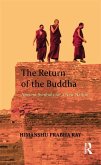Malla was one of the solasa (16) mahajanapadas of ancient India mentioned in the Anguttara Nikaya. It was named after the ruling clan of the same name. The Mahabharata (VI.9.34) mentions the territory as the Mallarashtra (Malla state). The Malla mahajanapada was situated north of Magadha. It was a small mahajanapada. The mahajanapada was divided into two main parts and the river Kakuttha (present day Kuku) was probably the dividing line. The capital of these two parts were Kusavati or Ku in ra (modern Kasia near Gorakhpur) and P v , modern Padrauna, 12 miles from Kasia). Ku in ra and Pava are very important in the history of Buddhism since Buddha took his last meal and was taken ill at Pava and went to his Mah parinirv a at Ku in ra. The Mallas were a powerful clan of eastern India at the time of Gautama Buddha and they are frequently mentioned in Buddhist and Jaina works. The Mahabharata (II.30.3) mentions that the second Pandava Bhima is said to have conquered the chief of the Mallas in course of his expedition to eastern India. The Mahabharata (VI.9.46) mentions Mallas along with the Angas, Vangas, and Kalingas as eastern tribes.
Bitte wählen Sie Ihr Anliegen aus.
Rechnungen
Retourenschein anfordern
Bestellstatus
Storno








